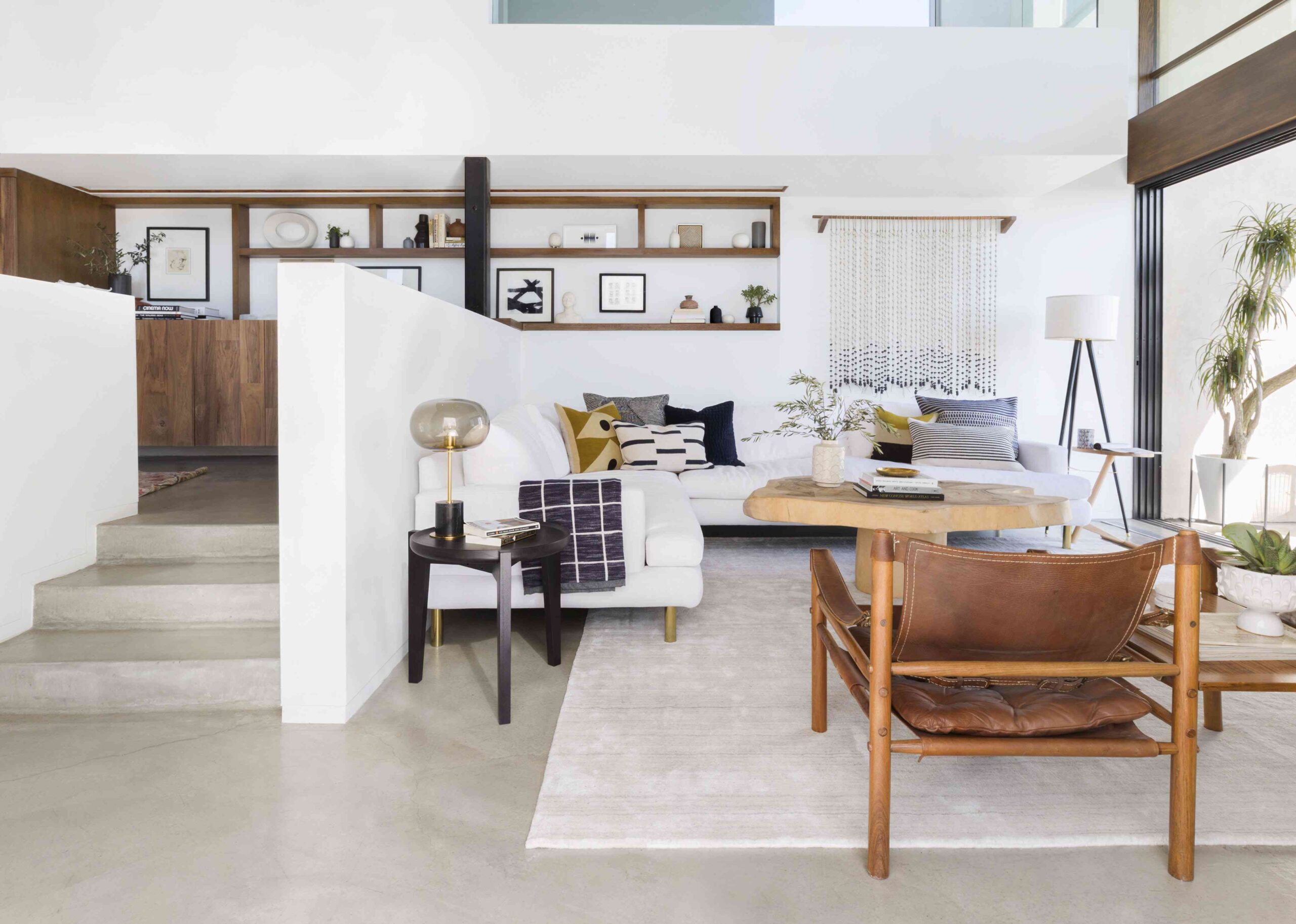
Open Floor Plans Simply Can’t Compete With Broken Floor Plans—Designers Share Why
Interior design isn’t black and white—while there are a few rules, many decisions come down to what you like and what your lifestyle calls for. If you often find yourself stuck in the middle of two style types, architectural features, or floor plans, you’ll likely become a fast fan of the broken floor plan.
It’s the perfect happy medium for folks who think an open floor plan is overrated but a closed floor plan is too limiting. It helps divide your space without completely closing it off to other areas. If your home features this layout (or you’re considering moving into a dwelling that has this distinct design plan), then you’ll want to consider these tips from design experts on how to make the most of it.
Meet the Expert
- Samantha Pratt is the owner and principal designer of Samantha Ashley Designs, based in Glenmoore, PA.
- Elizabeth Vergara is the CEO and founder of Vergara Homes, a full-service design-build firm based in New York City.
What Is a Broken Floor Plan?
A broken floor plan is also sometimes called a semi-open floor plan and involves rooms that are interconnected but have some kind of architectural feature or design elements that makes it more closed off than its spacious, fully open counterpart.
“This concept is a blend of marrying the modern approach of an open floor plan which separates rooms with subtle divisions such as glass partitions, furniture arrangements, level changes, and wall treatment transitions,” explains principal designer Samantha Pratt.
With this type of layout comes a set of different perks, as well as a few design challenges. But knowing how to work with what you have is the most important thing.
“A broken floor plan allows for more privacy, more flexibility, and more visual interest,” says design-build founder Elizabeth Vergara. “It’s more versatile since you can tailor each area for different functions—like a reading nook tucked behind a bookshelf or a semi-private home office created with a slatted divider.”
There are also elements that make these layouts trickier to design. You might feel like the space is one room (with an obstacle in the way) or the rooms might feel distinctly separate but in dire need of a theme that links them together. With our experts’ advice, it’s possible to bring cohesion to your broken floor plan, making it quickly rival that of an open-floor plan home.
Want more design inspiration? Sign up for our free daily newsletter for the latest decor ideas, designer tips, and more!
Broken vs. Open Floor Plans
Whether you’re designing a new home from scratch or weighing up your options for a potential move, you might be wondering how a broken floor layout compares to an open floor plan.
“They both create a sense of flow in spaces but they do define spaces differently,” says Pratt. “An open concept has minimal barriers in main areas like the kitchen, living, dining where a broken floor plan has more subtly serrate dividers create defined spaces.”
According to Pratt and Vergara, these are a few of the other distinct differences:
- Broken floor plans have better sound control without fully closing off areas.
- Broken floor plans provide more structure.
- Broken floor plans have a good blend of connection and separation.
- Open floor plans are free of permanent dividers (save for features like islands or furniture).
- Open floor plans offer seamless transitions between rooms.
How to Make a Broken Floor Plan Work for You
Styling a broken floor plan differs slightly from decorating an open floor plan. To buffer out any awkwardness from staircases, half-walls, or narrow hallways, there are design tricks you can use to keep the open feeling alive.
“The key is cohesion: Use consistent flooring and a complementary color palette throughout so the space feels unified, even with separate zones,” Vergara says. “Strategic furniture placement also plays a big role.”
If your aim is to add a little more separation to your broken floor plan and creating zones for different purposes, she suggests bringing in elements like partial walls, glass partitions, built-in shelving, or furniture—focusing on the right placement.
Sitting Room and Bedroom Broken Floor Plan
Design by Samantha Ashley Designs / Photo by Rebecca McAplin
A broken floor plan can sometimes feel just as exposed as an open floor plan, especially when it’s blending shared areas with more private spaces. This is often the case when you’re working with a bedroom and another room.
In this example, you have a sitting room that’s linked up with a coffee bar and a primary bedroom. Although it’s not fully an open plan, the eye-catching wallpaper, similar textiles (used in the rugs in both the bedroom and sitting area), and consistent color palettes keep these spaces separate yet cohesive.
Kitchen and Dining Broken Floor Plan
A hallway both connects and slightly divides this dining area and kitchen. To prevent fully separating them, large statement lighting creates a visual pathway of sorts that draws your eye between both rooms.
“Sofa placement can help define a living area, area rugs can anchor spaces, and shelving or console tables can subtly separate zones while keeping sight lines open,” says Vergara. “The goal is to balance being connected but staying intentional.”
There are many good examples in this space. Sight lines remain clear, and there are consistent colors between both areas. The focus on making the entire space feel light and airy also prevents these interconnected rooms from feeling more like a closed floor plan.
Living Room and Kitchen Broken Floor Plan
Emily Henderson Designs / Photo by Sara Tramp
Sometimes a broken floor plan will involve different levels. This space features a living room, an upstairs level, and then one more set of stairs leading into a kitchen. However, there are no doors or full walls that close these areas off from one another entirely.
This makes for an exciting (although slightly challenging) opportunity to make them feel like they’re one space, while still separating out specific purposes for each level.
“Find ways to connect the spaces visually from room to room by bringing through similar elements in each space,” says Pratt. “Also by layering lighting in the areas creating nice ambiance and functionality. Lastly, have a cohesive color palette and introduce different textures and tones within that palette.”
These are just a few examples of the ways you can make this intriguing floor plan work in your favor. While open and closed layouts flip-flop in popularity, a broken floor plan is an ideal choice that sits right between the two.










